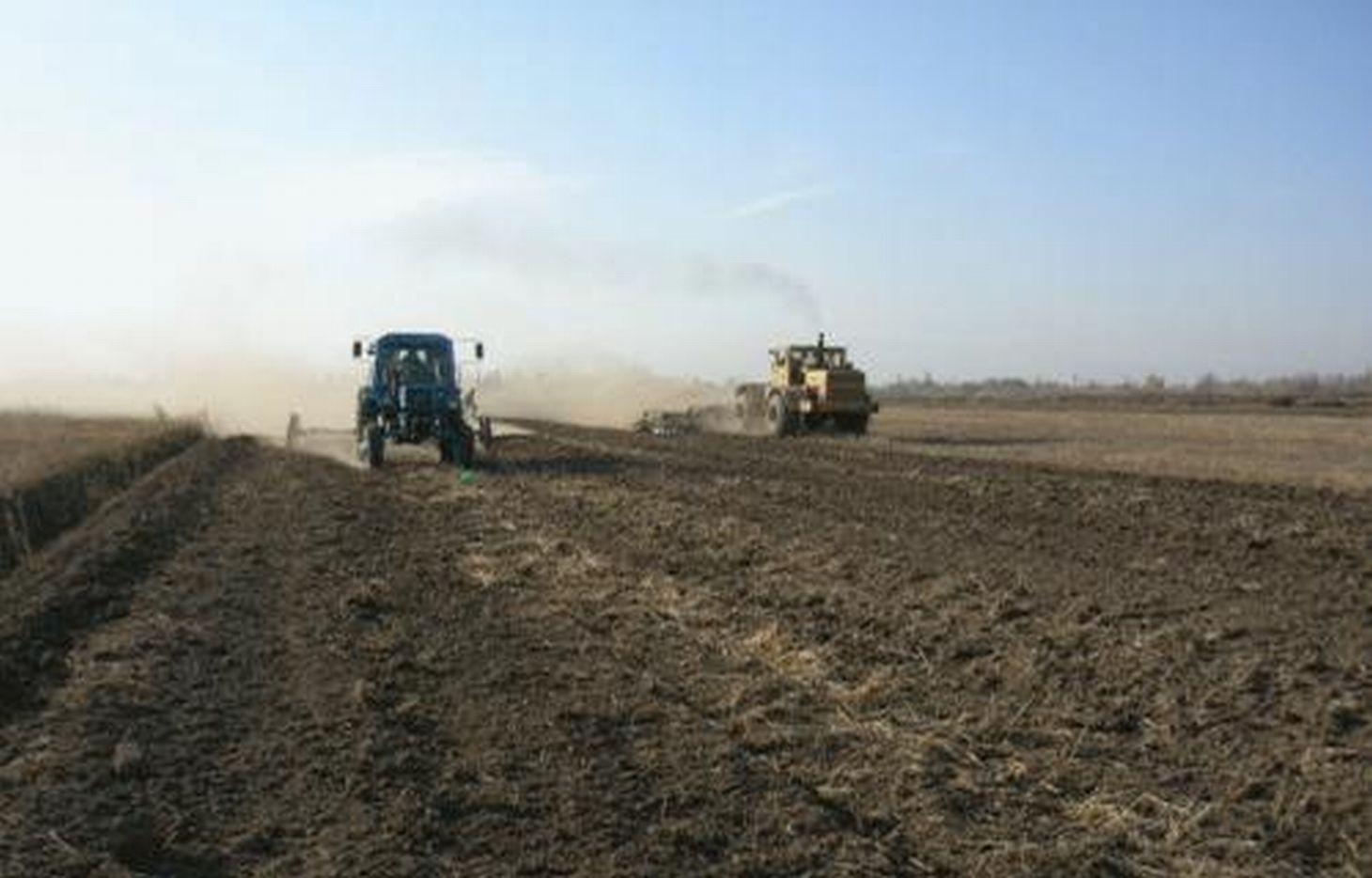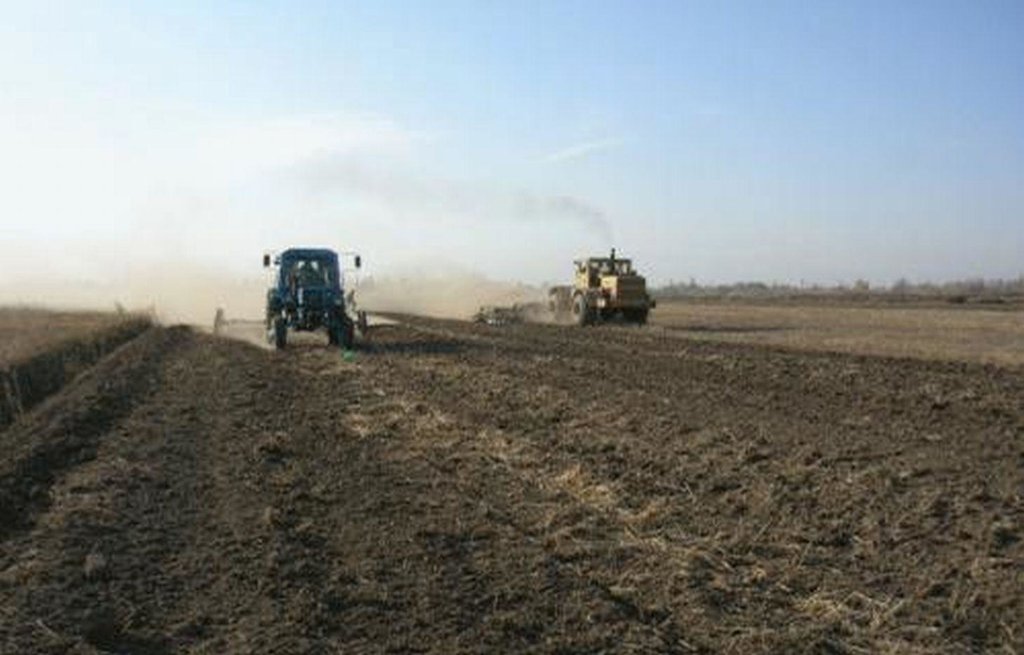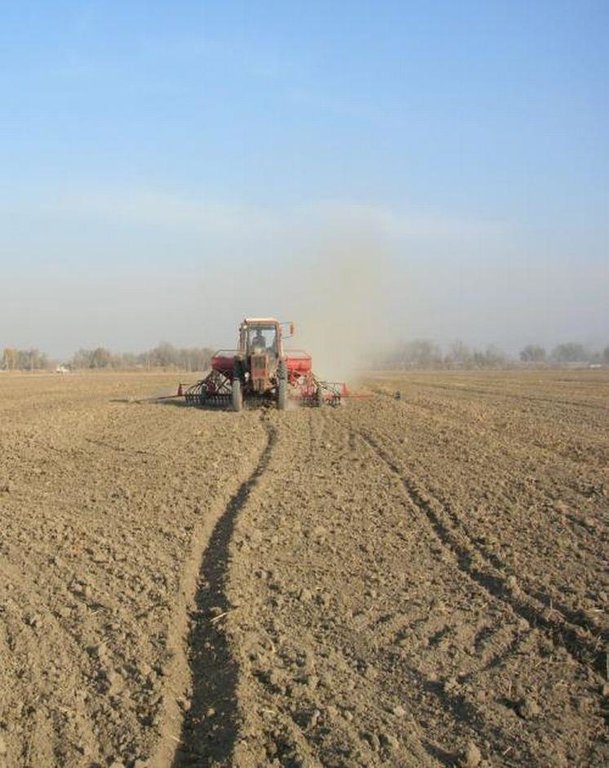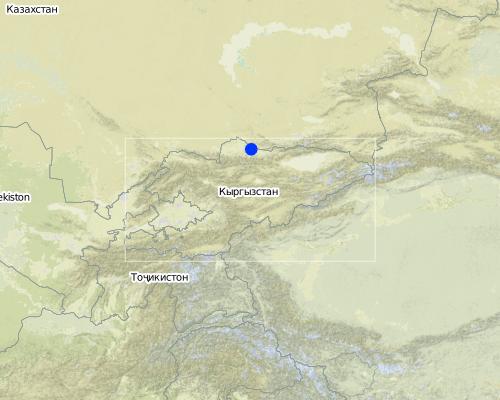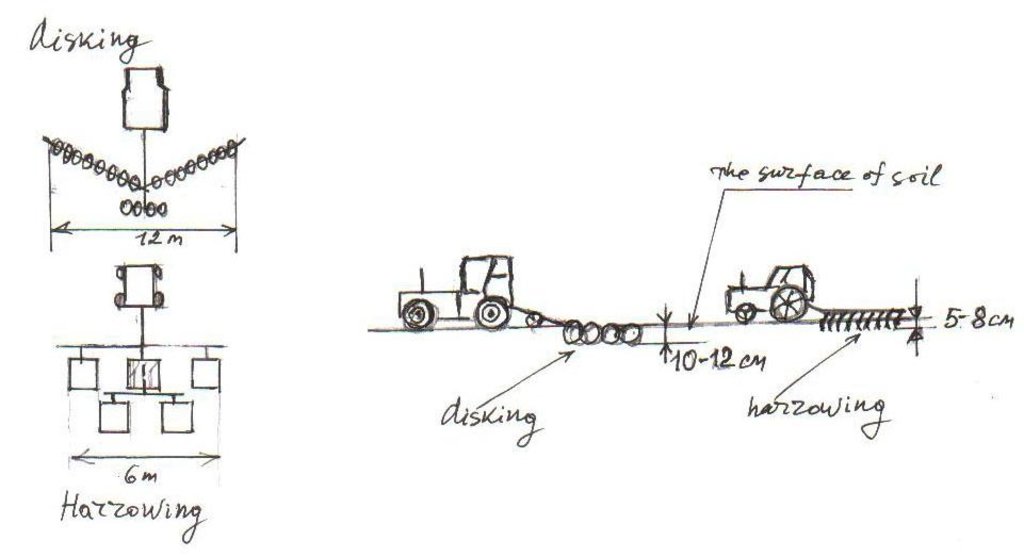Минимальная обработка почвы при выращивании зерновых культур (ИСЦАУЗР) [Kyrgyzstan]
- Creation:
- Update:
- Compiler: Abdybek Asanaliev
- Editor: –
- Reviewer: Alexandra Gavilano
Кыргызстан - Инициатива Стран Центральной Азии по Управлению Земельными Ресурсами (CACILM/ИСЦАУЗР)
technologies_1120 - Kyrgyzstan
- Full summary as PDF
- Full summary as PDF for print
- Full summary in the browser
- Full summary (unformatted)
- Минимальная обработка почвы при выращивании зерновых культур (ИСЦАУЗР): Des. 28, 2016 (inactive)
- Минимальная обработка почвы при выращивании зерновых культур (ИСЦАУЗР): Junie 3, 2017 (inactive)
- Минимальная обработка почвы при выращивании зерновых культур (ИСЦАУЗР): Aug. 3, 2017 (inactive)
- Минимальная обработка почвы при выращивании зерновых культур (ИСЦАУЗР): Mei 9, 2019 (public)
View sections
Expand all Collapse all1. General information
1.2 Contact details of resource persons and institutions involved in the assessment and documentation of the Technology
SLM specialist:
Name of project which facilitated the documentation/ evaluation of the Technology (if relevant)
Central Asian Countries Initiative for Land Management (CACILM I)Name of the institution(s) which facilitated the documentation/ evaluation of the Technology (if relevant)
Kyrgyz Agrarian University (Kyrgyz Agrarian University) - Kyrgyzstan1.3 Conditions regarding the use of data documented through WOCAT
When were the data compiled (in the field)?
29/08/2011
The compiler and key resource person(s) accept the conditions regarding the use of data documented through WOCAT:
Ja
2. Description of the SLM Technology
2.1 Short description of the Technology
Definition of the Technology:
Минимальная обработка почвы на глубины 10-12см с помощью плуга создает рыхлую слой почву, обеспечивает сохранению продуктивную влажность до посева сельскохозяйственных культур, а также исключает уплотнение почвы связи с использованием тяжелой техники и трактаров.
2.2 Detailed description of the Technology
Description:
При проведении обычной отвальной вспашки на глубину 20-25 см в течение многих лет на сероземных суглинистых и глинистых почвах, образуется под плужный плотный слой, препятствующий вертикальной фильтрации воды и воздухообмену. Поэтому, периодически этот слой надо разрушать с почвоуглубительным ножом, установленный на раме плуга. При этом увеличивается нагрузка на трактор и соответственно растет затраты на топливо. Обычно после уборки зерновых колосовых культур вспашку сразу не проводят и из почвы вода испаряется очень интенсивно. Когда начинают пахать почву в конце сентября влаги в почве очень мало и вспашка идет с большими затратами топлива на трактор.
При минимальной обработке почвы, поле обрабатывают дисками на глубину 12-15 см. Вслед за дискованием поле боронуют. Нет необходимости проведения малования – выравнивание поверхности специальной сельскохозяйственной машиной. При обычной вспашке нужно обязательно проводить еще выравнивание поверхности почвы. Таким образом, создается ровная и рыхлая поверхность поля, не имеющая капилляров внутри, через которые влага быстро испаряется. При этом запас продуктивной влаги на глубине сева на 30% больше, чем при подготовке почвы обычной вспашкой. Следовательно, полевая всхожесть семян также увеличивается.
Когда проводят вспашку почвы трактором К-700 расход топлива 25-30 л/га, а при проведении минимальной обработки топливо расходуется 15-20 л/га. При проведении отвальной вспашки происходить усиленное высвобождение СО2- углекислого газа, при минимальной обработке такое выделение меньше (в рамках ИСЦАУЗР).
Purpose of the Technology: Сокращение испарения влаги и СО2 из почвы, создание условий для накопления влаги в почве. Устранение уплотнения почвы и сокращения расходов на топливо при подготовке почвы для посева
Establishment / maintenance activities and inputs: Для введения минимальной обработки для полевой практики необходимо критически отнестись к классическим мероприятиям обработки почвы для возделывания зерновых культур. Известно, что отвальная вспашка, прежде всего предназначалась для уничтожения сорняков, а также их семян. Необходимо также учесть изменившиеся условия хозяйствования, когда земли принадлежать частной собственности и для проведения агротехнических приемов возделывания затрачиваются средства самого фермера. В советское время средства шли из центрального бюджета, и сельское хозяйство дотировалось. Поэтому в таких условиях мало было заинтересованных земледельцев, которые бы думали о сокращении или отказе от каких либо агротехнических приемов, например нулевая обработка почвы.
Применение минимальной обработки для выращивания зерновых колосовых, позволяет сокращения числа обработок почвы, следовательно, позволяет экономию средств вклада (топливо, смазочные масла), оплаты труда. Кроме подготовки почвы все другие мероприятия на содержание одинаковые как при обычной вспашке
Natural / human environment: Это, прежде всего изменения климата провяливающиеся частыми засухами и таяниями ледников. Поэтому нужно стремится к смягчению этого влияния. В условиях аридного климата сохранения влаги в почве перед посевом и в период вегетации имеет решающую роль. При обычной вспашке образующееся подпахотным горизонтом плужная «подошва» нарушает водно-воздушный режим почвы и снижает урожай зерна. Кроме этого этот прием также отрицательно влияет жизни аэробных почвенных микроорганизмов. При минимальной обработке почвы для возделывания зерновых колосовых культур многие из этих проблем решается положительно.
2.3 Photos of the Technology
2.5 Country/ region/ locations where the Technology has been applied and which are covered by this assessment
Country:
Kyrgyzstan
Region/ State/ Province:
Кыргызская Республика
Further specification of location:
Чуйская область
Map
×2.6 Date of implementation
If precise year is not known, indicate approximate date:
- less than 10 years ago (recently)
2.7 Introduction of the Technology
Specify how the Technology was introduced:
- through land users' innovation
3. Classification of the SLM Technology
3.2 Current land use type(s) where the Technology is applied

Cropland
- Annual cropping

Grazing land
Extensive grazing land:
- Semi-nomadism/ pastoralism
Comments:
Major land use problems (compiler’s opinion): Отсутствие единой концепции сохранения сельскохозяйственных земель, включая защиту плодородия пашни. «Закон об использовании земель сельскохозяйственного назначения» нуждается во внесении в него изменений. Нет специального государственного органа по защите плодородия почв. Вспомогательные сервисные службы слабо развиты.
Major land use problems (land users’ perception): Высокая стоимость минеральных удобрений, семян и горюче смазочных материалов. Покупка новых тракторов и сельскохозяйственных машин доступно только состоятельным фермерам. Консультационные службы не развиты.
Semi-nomadism / pastoralism: Летом перегоняют на горные пастбища
Ranching: Содержать коров для производства молока и мяса
3.3 Further information about land use
Water supply for the land on which the Technology is applied:
- full irrigation
Number of growing seasons per year:
- 1
Specify:
Longest growing period in days: 160
Longest growing period from month to month: Апрель - Сентябрь
Livestock density (if relevant):
1-10 УГ/км2
3.5 Spread of the Technology
Specify the spread of the Technology:
- evenly spread over an area
If the Technology is evenly spread over an area, indicate approximate area covered:
- 1-10 km2
Comments:
Total area covered by the SLM Technology is 200 m2.
3.6 SLM measures comprising the Technology

agronomic measures
- A3: Soil surface treatment
Comments:
Main measures: agronomic measures
Type of agronomic measures: минимальная обработка
3.7 Main types of land degradation addressed by the Technology

physical soil deterioration
- Pc: compaction

biological degradation
- Bl: loss of soil life
Comments:
Main type of degradation addressed: Фу (Pc): уплотнение/сжатие/ухудшение структуры почвы
Main causes of degradation: управление землеи (Мелиоративные мероприятия не проводятся.), вводимый ресурс и инфраструктура: (дороги, рынки, распределение водных пунктов другие . (Полевые дороги разрушены, сельскохозяйственная техника устаревшая.)
Secondary causes of degradation: управление с/х культурами (однолетние, многолетние, деревья/кустарники) (Нарушение схем чередования культур (нет севооборотов).), засуха (Через каждые 3 года происходит засуха.), управление/ инстициональныи (Слабо развиты фермерские ассоциации.)
3.8 Prevention, reduction, or restoration of land degradation
Specify the goal of the Technology with regard to land degradation:
- reduce land degradation
Comments:
Main goals: mitigation / reduction of land degradation
4. Technical specifications, implementation activities, inputs, and costs
4.1 Technical drawing of the Technology
4.2 Technical specifications/ explanations of technical drawing
В рисунке а) указана схема обработки почвы отвальной вспашкой. б) указана схема минимальной обработки почвы.
Location: поля хозяйства «МИС». Чуйская область
Date: 30.09.2011
Technical knowledge required for field staff / advisors: высокий
Technical knowledge required for land users: средний
Main technical functions: улучшение структуры верхнего слоя почвы (прессование)
Secondary technical functions: повышение / поддержание сохранения воды в почве, сокращение освобождения СО2 из почвы.
Minimum tillage
Material/ species: Дисковое сельскохозяйственное орудие
Quantity/ density: 10cм
Remarks: Дискование и выравнивание боронами.
4.3 General information regarding the calculation of inputs and costs
other/ national currency (specify):
сом
Indicate exchange rate from USD to local currency (if relevant): 1 USD =:
40.0
Indicate average wage cost of hired labour per day:
7.00
4.5 Costs and inputs needed for establishment
| Specify input | Unit | Quantity | Costs per Unit | Total costs per input | % of costs borne by land users | |
|---|---|---|---|---|---|---|
| Equipment | None | None | 1.0 | 1000.0 | 1000.0 | 100.0 |
| Equipment | None | 1.0 | 5.0 | 5.0 | 100.0 | |
| Total costs for establishment of the Technology | 1005.0 | |||||
4.6 Maintenance/ recurrent activities
| Activity | Type of measure | Timing/ frequency | |
|---|---|---|---|
| 1. | Дискование (минимальная обработка почвы) | Agronomic | После сбора урожая |
| 2. | Боронование | Agronomic | После сбора урожая |
| 3. | Боронование | Agronomic | |
| 4. | Посев | Agronomic | Октябрь |
| 5. | Уборка | Agronomic | В период созревания зерна |
4.7 Costs and inputs needed for maintenance/ recurrent activities (per year)
| Specify input | Unit | Quantity | Costs per Unit | Total costs per input | % of costs borne by land users | |
|---|---|---|---|---|---|---|
| Labour | None | None | 1.0 | 45.0 | 45.0 | 100.0 |
| Equipment | None | None | 344.0 | 26.5 | 9116.0 | 100.0 |
| Fertilizers and biocides | None | None | 0.25 | 37.5 | 9.38 | 100.0 |
| Fertilizers and biocides | None | None | 0.5 | 50.0 | 25.0 | 100.0 |
| Total costs for maintenance of the Technology | 9195.38 | |||||
5. Natural and human environment
5.1 Climate
Annual rainfall
- < 250 mm
- 251-500 mm
- 501-750 mm
- 751-1,000 mm
- 1,001-1,500 mm
- 1,501-2,000 mm
- 2,001-3,000 mm
- 3,001-4,000 mm
- > 4,000 mm
Agro-climatic zone
- semi-arid
Thermal climate class: temperate. 5 месяцев имеет выше 10° C тепла
5.2 Topography
Slopes on average:
- flat (0-2%)
- gentle (3-5%)
- moderate (6-10%)
- rolling (11-15%)
- hilly (16-30%)
- steep (31-60%)
- very steep (>60%)
Landforms:
- plateau/plains
- ridges
- mountain slopes
- hill slopes
- footslopes
- valley floors
Altitudinal zone:
- 0-100 m a.s.l.
- 101-500 m a.s.l.
- 501-1,000 m a.s.l.
- 1,001-1,500 m a.s.l.
- 1,501-2,000 m a.s.l.
- 2,001-2,500 m a.s.l.
- 2,501-3,000 m a.s.l.
- 3,001-4,000 m a.s.l.
- > 4,000 m a.s.l.
5.3 Soils
Soil depth on average:
- very shallow (0-20 cm)
- shallow (21-50 cm)
- moderately deep (51-80 cm)
- deep (81-120 cm)
- very deep (> 120 cm)
Soil texture (topsoil):
- medium (loamy, silty)
Topsoil organic matter:
- medium (1-3%)
5.4 Water availability and quality
Ground water table:
< 5 m
Availability of surface water:
good
Water quality (untreated):
good drinking water
5.5 Biodiversity
Species diversity:
- medium
5.6 Characteristics of land users applying the Technology
Off-farm income:
- less than 10% of all income
Relative level of wealth:
- average
- rich
Individuals or groups:
- individual/ household
Level of mechanization:
- mechanized/ motorized
Gender:
- men
Indicate other relevant characteristics of the land users:
Land users applying the Technology are mainly common / average land users
Population density: 10-50 persons/km2
Annual population growth: 1% - 2%
10% of the land users are rich and own 40% of the land.
70% of the land users are average wealthy and own 50% of the land.
20% of the land users are poor and own 10% of the land.
Off-farm income specification: Предоставляют на аренду технику.
Market orientation of production system: mixed (subsistence/ commercial, commercial/ market, commercial/ market
5.7 Average area of land owned or leased by land users applying the Technology
- < 0.5 ha
- 0.5-1 ha
- 1-2 ha
- 2-5 ha
- 5-15 ha
- 15-50 ha
- 50-100 ha
- 100-500 ha
- 500-1,000 ha
- 1,000-10,000 ha
- > 10,000 ha
Is this considered small-, medium- or large-scale (referring to local context)?
- medium-scale
5.8 Land ownership, land use rights, and water use rights
Land ownership:
- individual, not titled
Land use rights:
- communal (organized)
- individual
5.9 Access to services and infrastructure
health:
- poor
- moderate
- good
education:
- poor
- moderate
- good
technical assistance:
- poor
- moderate
- good
markets:
- poor
- moderate
- good
energy:
- poor
- moderate
- good
roads and transport:
- poor
- moderate
- good
drinking water and sanitation:
- poor
- moderate
- good
financial services:
- poor
- moderate
- good
6. Impacts and concluding statements
6.1 On-site impacts the Technology has shown
Socio-economic impacts
Production
crop production
fodder production
risk of production failure
land management
Socio-cultural impacts
food security/ self-sufficiency
Quantity before SLM:
37 ц
Quantity after SLM:
40 ц
SLM/ land degradation knowledge
Ecological impacts
Soil
soil moisture
Quantity after SLM:
20%
Biodiversity: vegetation, animals
habitat diversity
Quantity after SLM:
30 %
pest/ disease control
6.2 Off-site impacts the Technology has shown
downstream siltation
Quantity after SLM:
10 %
damage on neighbours' fields
Quantity before SLM:
15 %
Quantity after SLM:
5 %
6.3 Exposure and sensitivity of the Technology to gradual climate change and climate-related extremes/ disasters (as perceived by land users)
Gradual climate change
Gradual climate change
| Season | Type of climatic change/ extreme | How does the Technology cope with it? | |
|---|---|---|---|
| annual temperature | increase | not well |
Climate-related extremes (disasters)
Meteorological disasters
| How does the Technology cope with it? | |
|---|---|
| local rainstorm | well |
Climatological disasters
| How does the Technology cope with it? | |
|---|---|
| drought | not well |
6.4 Cost-benefit analysis
How do the benefits compare with the establishment costs (from land users’ perspective)?
Short-term returns:
slightly positive
Long-term returns:
positive
How do the benefits compare with the maintenance/ recurrent costs (from land users' perspective)?
Short-term returns:
positive
Long-term returns:
very positive
6.5 Adoption of the Technology
Comments:
20% of land user families have adopted the Technology without any external material support
30 land user families have adopted the Technology without any external material support
Comments on spontaneous adoption: Все 30 семьей добровольно приняли технологию после посешения демонстрационного поля
There is a moderate trend towards spontaneous adoption of the Technology
6.7 Strengths/ advantages/ opportunities of the Technology
| Strengths/ advantages/ opportunities in the land user’s view |
|---|
|
снижение затрат труда и топлива How can they be sustained / enhanced? Пока есть нужда экономии средств производства |
|
повышение производительности труда с применением минимальной обработки которая позволяет увеличить урожайность зерна без дополнительного рабочего времени How can they be sustained / enhanced? повышение осведомленности об увеличении производительности труда за счет применения минимальной обработки |
| увеличение урожайности зерна |
| Strengths/ advantages/ opportunities in the compiler’s or other key resource person’s view |
|---|
|
Улучшение жизнедеятельности аэробной почвенной микрофлоры и почво обитающих насекомых. How can they be sustained / enhanced? Если имеется консультационная служба для обучения фермеров |
|
ослабляет образование подпахотного плотного слоя How can they be sustained / enhanced? Избегать применения обычной вспашки в будущем. |
|
увеличение урожайности зерна How can they be sustained / enhanced? Применение минимальной обработки на фоне других оптимальных агротехнических методов (оптимальные сроки посева, нормы и глубина посева, хороший режим орошения, системы борьбы с болезнями и вредителями, оптимальный срок уборки). |
|
снижение затраты топлива и труда How can they be sustained / enhanced? продолжение применение минимальной обработки |
|
улучшение знания фермеров How can they be sustained / enhanced? доступность консультационной службы |
6.8 Weaknesses/ disadvantages/ risks of the Technology and ways of overcoming them
| Weaknesses/ disadvantages/ risks in the land user’s view | How can they be overcome? |
|---|---|
| засоренность может увеличиваться | Это может быть контролирована применением севооборота, механическим уничтожением сорняков и применением сертифицированных семян. |
| Weaknesses/ disadvantages/ risks in the compiler’s or other key resource person’s view | How can they be overcome? |
|---|---|
| первый год применение этой технологии засоренность полей может увеличиваться | Оптимальная применения гербицидов на полях |
| может увеличиваться почвенные вредители, которые погибли бы при обычной вспашке | оптимизация применения пестицидов на полях |
7. References and links
7.2 References to available publications
Title, author, year, ISBN:
Отчет о производственной деятельности главного агронома Кантского МИС, 2006 год
Available from where? Costs?
Кооператив СХПК «МИС», не продается
Links and modules
Expand all Collapse allLinks
No links
Modules
No modules


